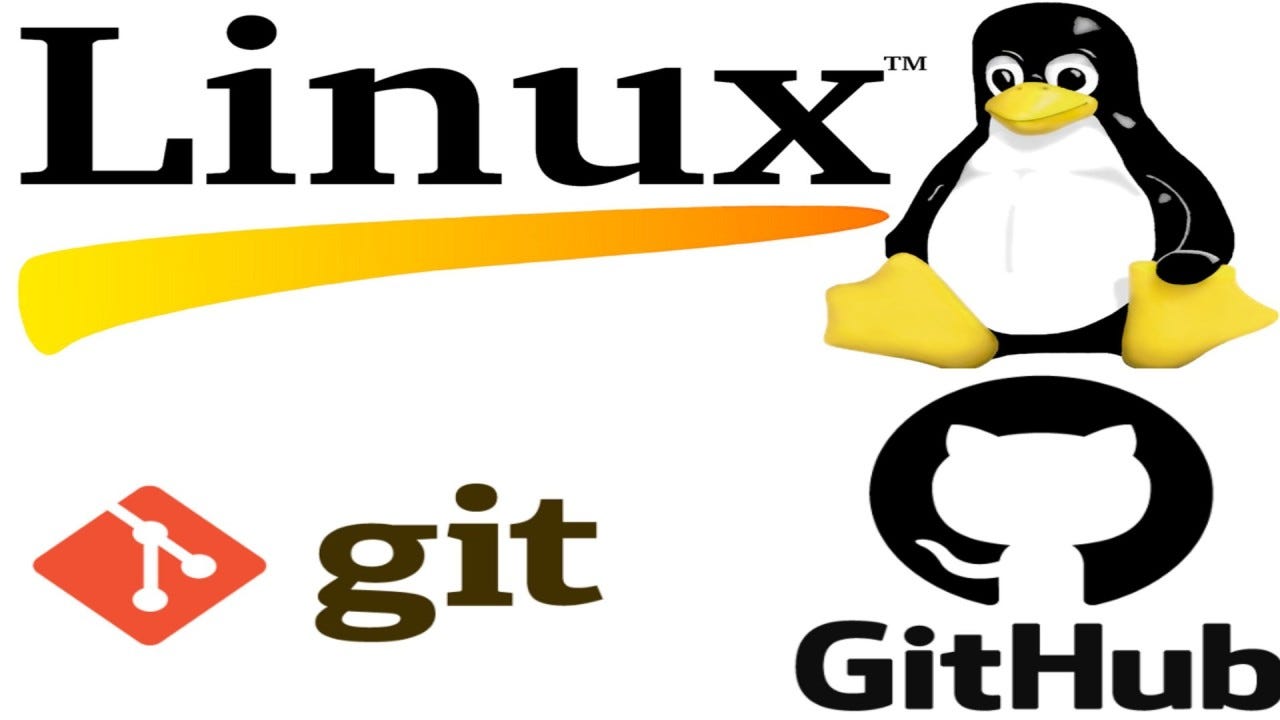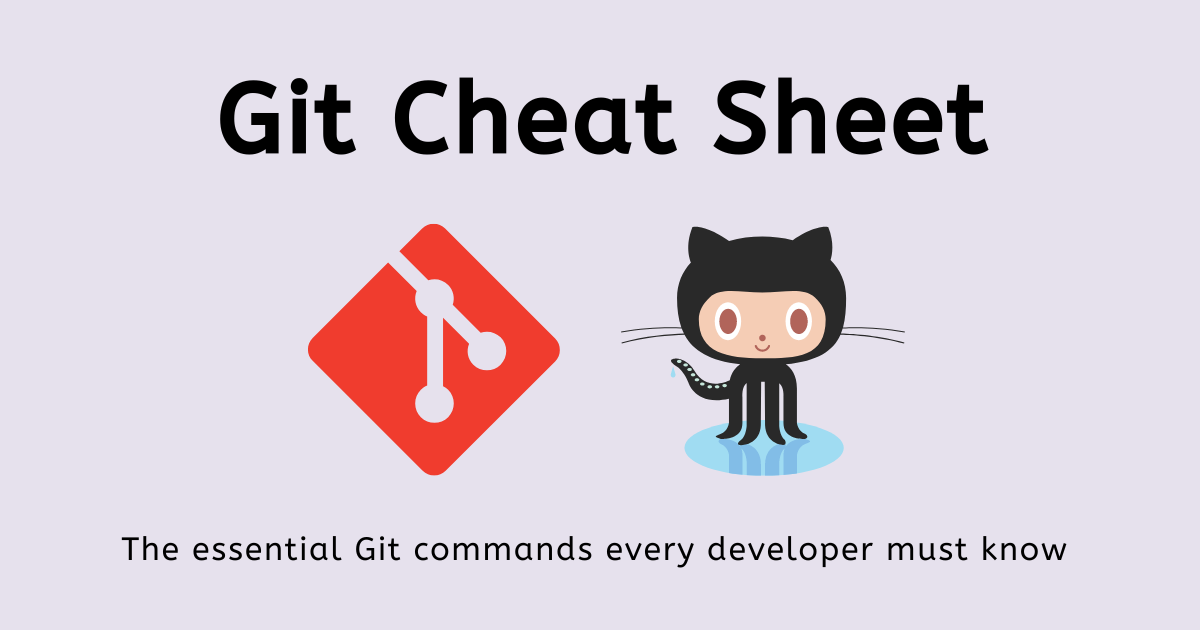Day 12: Cheat-Sheet for Linux and Git Commands
 Vishal Kumar
Vishal Kumar
We have completed the Linux & Git-GitHub hands-on, let's make a cheat sheet of all the commands we have learned so far.
Linux commands:
whoami -> It is used to display the current username.
man -> It is used to display the user manual of any command.
echo -> It is used to display the line of text or strings that are passed as an argument.
tree -> It is used to display the file system's directory structure in a tree-like format.
sudo -> It is used to run commands with administrative privileges.
date -> It is used to display the date and time.
history-> It is used to display the history of the commands executed by the user.
clear -> It is used to clear the terminal screen.
File and Operations Commands
ls -> It shows available files and directory lists in the present working directory.
ls -l -> It is used for knowing the details of files and directories.
ls -a -> It is used for showing the list of all the hidden files.
touch -> It is used to create empty files.
cp -> It is used to copy files from one directory to another.
mv -> It is used to rename and replace the files and directory.
rm -> It is used to remove the file and directory.
rm -r -> It is used for recursive deletion of files and directories.
ln -> It is used to create links between files.
Viewing and editing the file system
cat -> It is used to display file content on the terminal.
head -> It is used for printing the first ten lines(by default) of a text file.
tail -> It is used to display the last ten lines(by default) of a text file.
nano -> It is used for as an editor to create or edit a text file.
vim -> It is used as an editor to create or edit a text file.
less -> It is used to view file contents interactively.
Directory navigation
cd -> It is used for changing the directory.
mkdir -> It is used for creating a new directory.
pwd -> It displays the present working directory.
File permission
chmod -> It is used to change file and directory permissions.
chown -> It is used to change file ownership.
chgrp -> It is used to change the group ownership of files and directory.
Searching for files and directories
find -> It is used to search files and directories.
grep -> It is used to search for specified patterns or text in files.
which -> It is used to display the full path of a specified command.
locate -> It is used to quickly find files using a database.
Network Operations
ifconfig -> It is used to display or configure network interfaces.
ping -> It is used to send ICMP echo requests to a host.
ssh -> It is used to securely access remote systems over SSH.
hostname -> It is used to set and view the hostname of the system.
wget -> It is used to download files and interact with REST APIs.
curl -> It is used to transfer data to or from a server.
User Management and Group management
useradd -> It is used to add a new user.
passwd -> It is used to change the user password.
usermod -> It is used to modify user properties.
userdel -> It is used to delete a user.
groupadd -> It is used to add a group.
groupdel -> It is used to delete a group.
id -> It is used to identify if a user is created.
System Information
df -> It is used to display disk space usage.
du -> It is used to display file and directory space usage.
top -> It is used to display real-time system stats.
uname -> It is used to show system information.
Package Management
Apt -> It is a package management system for Debian, Ubuntu, and other similar Linux distributions.
Yum -> It is a package management tool for a variety of older RHEL-based distributions (such as CentOS 7) and older versions of Fedora.
DNF -> It is used to install, update, remove, and manage software packages on their Linux systems.
File compression
tar -> It is used to create, extract, and manipulate archive files.
gzip or gunzip -> It is used to compress or decompress files.
zip or unzip -> It is used to compress or extract files in ZIP format.
Git-GitHub commands

Git is a version-control system used for tracking changes in computer files. Git is a version-control system used for tracking changes in computer files.
Setting up Git:
git config --globaluser.name"Your Name"git config --globaluser.email"your@email.com"
Creating Repositories:
git init: It will initialize the git repo in our local system.git clone <repository_url>: It will clone a remote repository to your local machine.
Managing Changes:
git add <file>: It will add the file to the staging area.git commit -m "Commit message": It will commit the code with the message first commit.git rm <file name>: It will remove the file/folder.git status: It will check the status.git diff: It will show the changes between the working directory and the staging area.git diff --staged: It shows the changes between the staging area and the last commit.git reset <file>: It will unstage changes for a file, removing them from the staging area.git revert <commit>: It will create a new commit that undoes the changes from a specific commit.
Branching and Merging:
git branch: It will list all branches in the repository.git branch -a: it will list all branches.git branch <branch_name>: It will create a new branch.git checkout <branch_name>: It will switch to a different branch.git branch -M main: It will push to the branch we want.git merge <branch_name>: It will merge changes from one branch into another.git checkout -b <branch_name>: It will create a new branch and switch to it.git branch --delete <branch_name>: It will delete the branch.
Viewing History:
git log: It is used to display commit history.git-show: It is used to see log messages.
Updating and Publishing:
git pull: It is used to fetch and merge changes from a remote repository.git push origin <branch_name>: It is used to push local changes to a remote repository.git push -u origin <branch_name>: It pushes changes to the remote repository.
Temporary changes:
git stash: It will temporarily save changes that are not ready to be committed.git stash apply: It will apply to the most recent stash.git stash save "message": Changes can be stashed with a message.git stash list: It will list all stashed changes.Git stash changes: This command shows the changes in the most recent stash.git stash branch <branch name>: Create a new branch from your latest stash.Git stash pop:This command retrieves the most recent stash, applies the changes to your working directory, and removes it from the stash list.Git stash drop: This command discards the most recent stash without applying its changes to your working directory. It's like throwing away the stash.Git stash clear: This command removes all stashes. Use it with caution as it removes all stashes permanently.git cherry-pick <commit>: Apply changes from a specific commit to the current branch.
Summary
In this blog, we see all the major Linux and git commands that we used as a DevOps engineer. Whatever commands we have covered in our blogs and those which we have missed and are important for DevOps we add all the commands in this single cheatsheet.
Subscribe to my newsletter
Read articles from Vishal Kumar directly inside your inbox. Subscribe to the newsletter, and don't miss out.
Written by
